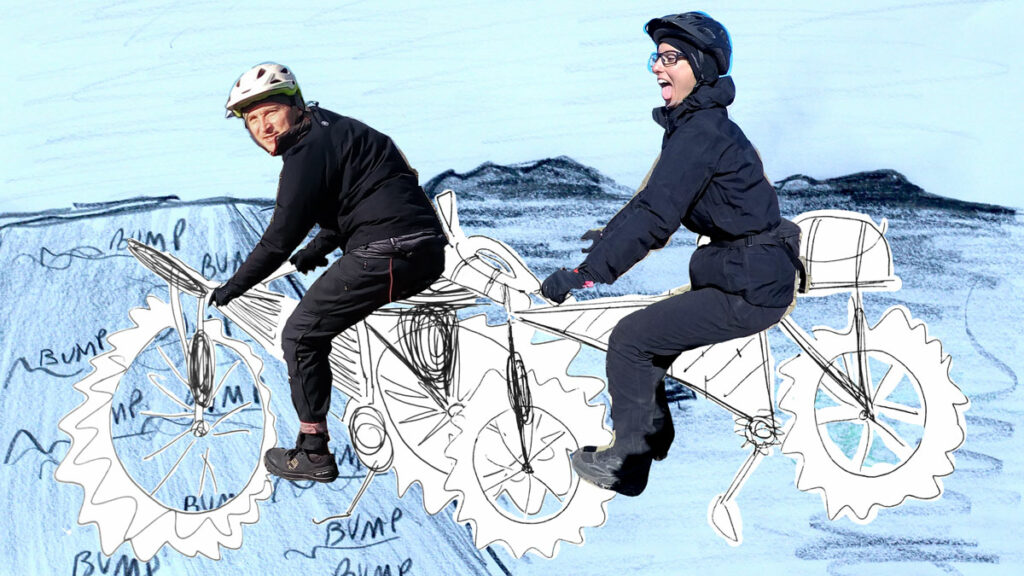Unfortunately one of our marker buoys was lost to a recent storm. The heavier weight of the added chain, which we hoped would keep the mooring fixed, indeed made it too fixed, so that the rope first ate through the rubber hose chafe protection, then ate through the rope. We dove the mooring yesterday and as soon as i moved the chain to try and sort it out, my visibility went from pretty good to absolute zero in about two seconds! This demonstrates how important situational awareness and trust in your team are, as when i was working with the chain, i could see nothing and could not focus on anything else but that. When i emerged from the cloud of silt and rust, quite disorientated, there was my teammate, patiently looking out, and i felt very reassured. Enough gas? check! You ok? check! Let’s go?! check!
Ocean Wave Data Buoy video
Recently we made a little video introducing our work with the REDEMA project here in Madeira. REDEMA is a research “Redesigning Madeira: Using Speculative Design to Rethink Energy Policy and Consumer Behavior”, project leads are James Auger and Julian Hanna. The video was a contribution to MacaroNight, a Horizon2020 project sharing research from several institutions around Macaronesia.
The video is immediately outdated, as we have already deployed a second iteration of the Data Buoy, but the ideas shared in the short edit can provide some relevant background. Have a watch!
REDEMA ocean wave data buoy project from max willis on Vimeo.
Sustainability and the Web
The kind of work that we are doing, investigating sustainability issues, needs to be supported both conceptually and materially, so we (are trying to) host our web content using as close 100% renewable energy as possible. This is on the face of it easily accomplished, and not too expensive simply by choosing so-called ‘green hosting’. We decided on 1984 hosting in Iceland, for their green credentials, but also for their privacy and security consciousness, and because we are enthralled by Iceland and its rugged, isolated islandness.
1984 hosting is powered completely by renewables, or at least, as much as possible and as far as we can discern. However commercial data centres usually keep some backup systems at the ready in case of catastrophic grid failure, in which case combustion generators kick in to keep everyone’s stuff online, and the commerce sites active making money. We have not investigated if 1984’s Icelandic system uses for backup power, but we take them at their word as being fully renewables powered, at least for the standard delivery of our web pages.
We are hosting a wordpress site, as multiple partners will be adding and updating, and since we haven’t developed web pages for years, having access to the community of wordpress developers and all their free themes, plugins and widgets helps a lot. However, there are likely some requests going out to external servers for code snippets which will burn unsustainably sourced energy on routing and host servers. Where these requests go to google, of course, these will remain on a sustainable power grid, however the transfer of data in-between and passes through conventionally-powered telecommunications networks, mobile phone towers, wifi-routers and into your laptop batteries. So it’s not all renewable from host to user.
Also, hosting videos at Vimeo isn’t the most sustainable means of sharing video, but youtube embedding adds so many back-end requests and tracking cookies that are firing everytime the code is displayed. Although this is only bytes for each communication, it all adds up to a lot of wasted energy. Our opinion is that vimeo is the least damaging to the environment of the two. This is a tricky question, where is the best place to host videos, and if Vimeo’s servers will deliver our video to you more efficiently than serving them from Iceland, it’s not clear, but as with wordpress, the service is convenient and quality, so we’ll stay with that. We will also try to keep image sizes reasonable for fast loading, low data transfer, which in general will reduce the load on the internet, and thus, power consumption while serving and viewing our pages.
We published an interesting article on this idea of sustainable internet communications, which outlines a number of things that can be done to reduce the energy and carbon impact of web communications. It’s called “Low Power Web: Legacy Design and the Path to Sustainable Net Futures” and you can find it here
Also, here is a fun online service to check your own website, how much damage is it doing to the environment, to host your content?

Low cost data buoy
One of the things we have been working on is a low-cost ocean wave data buoy, this is a marine environment sensing platform which we are developing to monitor ocean wave height, period and direction as part of a project exploring ocean wave energy capture.
Its one aspect of our work as postdoctoral researchers with REDEMA, “Redesigning Madeira: Using Speculative Design to Rethink Energy Policy and Consumer Behaviors” at ITI / LARSyS, Interactive Technologies Institute / Associate Laboratory of Robotics and Engineering Systems in Madeira, Portugal.
Special thanks to IFCN and ITI / LARSyS for facilitating this project!